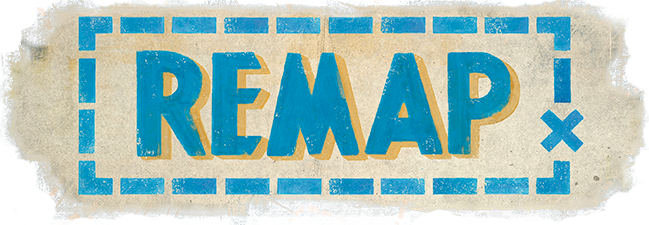A Highland Song is unique, as far as I can tell, in that it’s perhaps the first 2D game to have taken inspiration from 2017’s The Legend of Zelda: Breath of the Wild. There have been 3D riffs on Nintendo’s modern, open-world classic — Sable, Tchia, A Short Hike, arguably Death Stranding and Elden Ring – but no game, up until now, has reoriented Breath of the Wild’s open, adventurous spirit along the X and Y axes.
It’s surprising that Inkle was the team to make such a game, The U.K. studio, best known for narrative adventures like 80 Days and Heaven’s Vault, makes decidedly verbose games, with words and systems constructed around said words. A Highland Song is comparatively quiet, filled with long stretches where you hear little more than our main character, Moira McKinnon, muttering to herself as she shimmies, vaults, runs, and, should the stones be aligned, hops across the game’s Scottish wilds. Here, the environments and actions of Moira herself do the vast majority of the talking.
At the game’s start, Moira slips out of her bedroom window in the cottage she lives in alone with her mother. There’s a brother, we learn, who became ill and was sent to live in Edinburgh. It’s not clear where the father is but there are letters from an Uncle Hamish who has invited Moira to his lighthouse to celebrate Beltane, a pagan holiday celebrating the beginning of summer. So off Moira goes, with seven days to get there. She’s not quite running away but she’s certainly testing the limits of the fractious relationship with her mum. Above all, Moira wants to see Uncle Hamish, who seems to understand her better than anyone else and whose invitation will let her lay eyes on the ocean for the first time.
The first thing the game asks you to do is scale the summit behind Moira and her mum’s house – little more than a crag. Despite its modest stature, the camera dramatically pulls back, the horizon opens up, and the scale of the journey becomes apparent: some 40 miles of beautiful and treacherous terrain. What’s striking about this landscape, beyond the sheer scale, is the way it’s constructed from layers, ridges set atop ridges, which, taken together, create a striking sense of collective depth. Like Breath of the Wild, your perspective is guided across the topography, not necessarily to the biggest, furthest away peak, but deeper into the mountain itself. This is a world of glens, gullies, corries, and the secrets hidden behind each protruding piece of turf and rock.

Looking out across the vista, you’re tasked with finding a path by pulling out a map fragment, reading the landscape it corresponds to, and setting a waypoint. Once you locate it, follow the wooden posts deep into the wilderness, and A Highland Song opens up. You’re then free to point Moira in whichever direction you wish.
Within 15 minutes of zig-zagging back and forth across the hills, I felt thoroughly lost, which is precisely the feeling I think A Highland Song seeks to cultivate. Slowly, you learn to read the landscape in front of you, a more important skill here than in any game since Death Stranding. The various hills and ridges that constitute it are made up of further hills and ridges, all of which snake, twist, and interlock with one another. Sometimes, you have to peer closely at the screen to make them out and ascertain what’s in the foreground and what’s further away. (I recommend playing the game on the Switch in handheld mode to ease this process.)
This content is for registered subscribers only
Register now to access "Into the Mountain with A Highland Song".
Sign up now Already have an account? Sign in